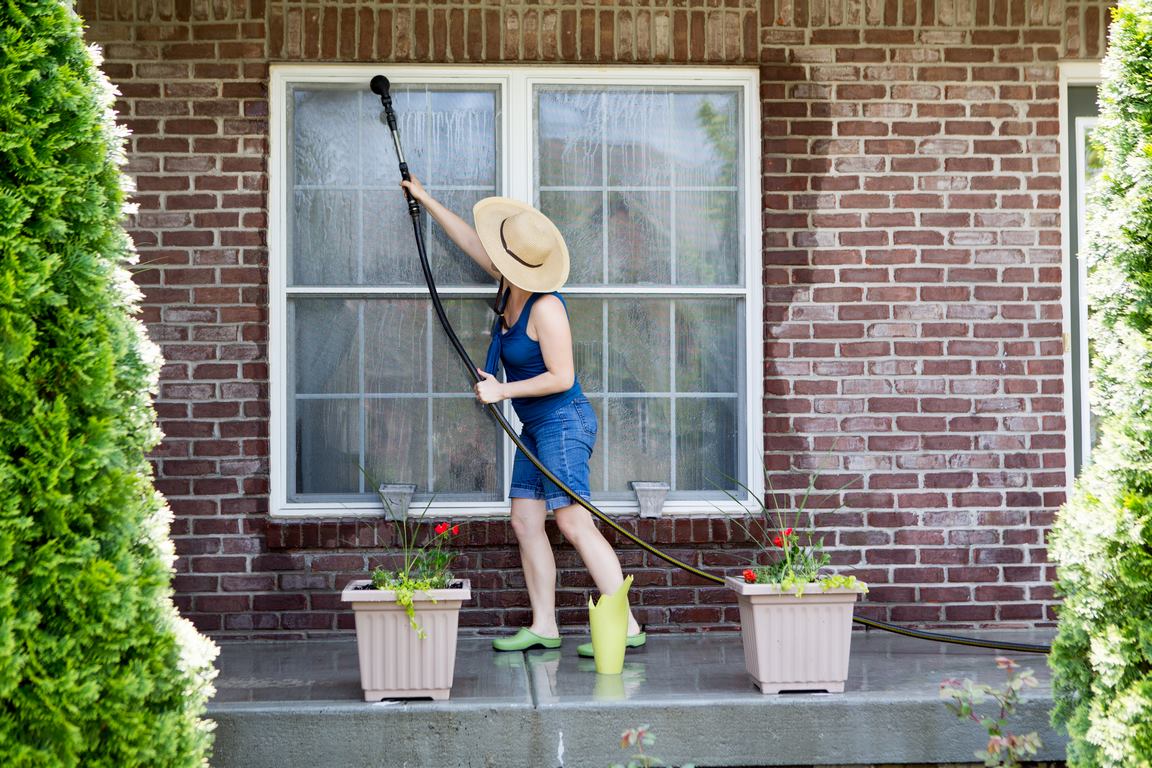Take a good look at your home’s exterior right now.

Does it look as inviting and pleasing as your interiors are? When homeowners want to improve their homes, it’s often the case that the interior is favored. So many home renovation and maintenance projects are focused on the inside, neglecting the exterior altogether.
While this situation may apply to the majority, it’s also not necessarily the best. After all, a home’s exterior is the first thing passers-by will notice about your home. The interior won’t do much to improve your home’s overall appeal if the exterior is left out. There has to be that balance between both, so your property looks as good on the outside as it does on the inside.
So, how do you go about protecting your home’s exterior? It’s a process that begins with good maintenance. When you take care of your home’s exterior, you can protect it from giving in to the outdoor elements. This article gives you a few tips and tricks you can start applying, both by your own efforts and with the help of a Naperville roofing company, among other tradesmen, if needed.
1. Check The Exterior Drainage
Ideally, puddles must not stand near your home for more than 24 hours. Once the sun starts to shine, it should slowly evaporate and dry up. You may want to check your exterior drainage if this isn’t the case. There could be some problem either due to a bad spout or that it’s simply in need of major cleaning.
Read Also:
2. Trim Your Plants and Vegetation
Trimming your plants and vegetation is something you’ll have to do every so often to ensure your plants don’t get in the way of potentially harming your home’s exterior.
For example, if you have trees around your backyard, double-check to ensure they’re not hanging too close to your roof to damage or break any of your shingles.
If you notice a few missing shingles or damage on your roof, give Lemont roofing, among other roofing contractors a ring for some help. Along this end, there are also other things you can do concerning plants and your exterior like:
- Make sure there isn’t any growth of unwanted plants around your home’s sides;
- Keep at least a foot or two between your home’s sides and any plants you will plant on the ground.
3. Power Wash Your Home’s Exterior
A huge part of maintaining your home’s exterior includes keeping it clean. Because it’s exposed to all the outdoor elements, it will naturally look dirty over time. You may not notice the difference until you compare the one side you power washed and the other that you didn’t.
Ideally, you’ll want to do this at least once annually. The longer you allow dirt and mildew to build up and settle in your home, the harder it’ll be to get it clean.
That being said, not having a pressure wash at home shouldn’t be reason enough why you shouldn’t clean your home’s siding. If there are rental companies around your area, you can always opt to rent a pressure washer. As a last resort, if this option still is unavailable, doing the manual work of scrubbing with soap and water is always a no-fail.
4. Check For Any Cracks and Damages on the Siding
Once in a while, give your home’s exterior a thorough check and inspection. Look out for any signs of cracks or damage on the siding. Even the smallest crack on the side will cause water to seep into the home and cause serious damage and trouble over time.
If you start to notice damage, give due attention to those by having them repaired and remodeled ASAP. It may cost a bit of money now, but that expense will certainly save you from a bigger problem in the future.
5. Clean Your Gutters
Dirty gutters can eventually get clogged. When this happens, water backs up instead of flowing down smoothly. This causes it to damage your roof, foundation, or sides.
Moreover, the most pertinent problem with clogged gutters isn’t just about the physical damage it can cause to your home but also the homeowners’ health. Clogged gutters can attract pests like rodents and be the perfect breeding ground for mosquitoes. Cleaning your gutters regularly is the best solution to prevent those problems from ensuing.
6. Check Your Windows and Doors
Another part of your home most susceptible to damage from outdoor elements is your doors and windows. It only makes sense for you to check them regularly for any gaps around the door frames and cracks in the window panes.
Cracks on your home’s siding have to be dealt with and repaired immediately. It’s more than just an aesthetic issue. Rather, ensuring your windows and doors are still properly sealed also keeps your electricity bill in check.
Otherwise, your home will be inefficient when your HVAC system can’t work as efficiently when cold and hot air constantly goes in and out of your home through gaps in the window panes and seals.
7. Pay Close Attention to the Garage Door
This seventh item on the list is something you’ll have to do as regards the home exterior that matters due to safety reasons. Even the most advanced garage doors can give in to wear and tear. Think about how often you close and open this in a day. Locks are eventually bound to get loose, or that garage doors may start to have jerky movements.
Unfortunately, ignoring those small signs can decrease your door’s lifespan. It also weakens your garage door’s ability to keep your home safe. In addition to regularly checking your garage doors, you may also want to lubricate the door’s moving parts at least once a year.
Conclusion
Your home is one of the biggest investments you’ll ever make in your life. Hence, it follows that you’ll want to be able to make the best out of it. Your home is more than just that structure that provides shelter and a place to live.
Rather, it’s also one in which you should feel at peace and happy. As soon as you round up your driveway, your home should look and feel inviting, like it’s calling you to rest.
This means ensuring that the exterior is as well maintained as the interior is. If your home’s exterior can use quite a bit of work, don’t hesitate to start with the strategies you’ve just learned.










